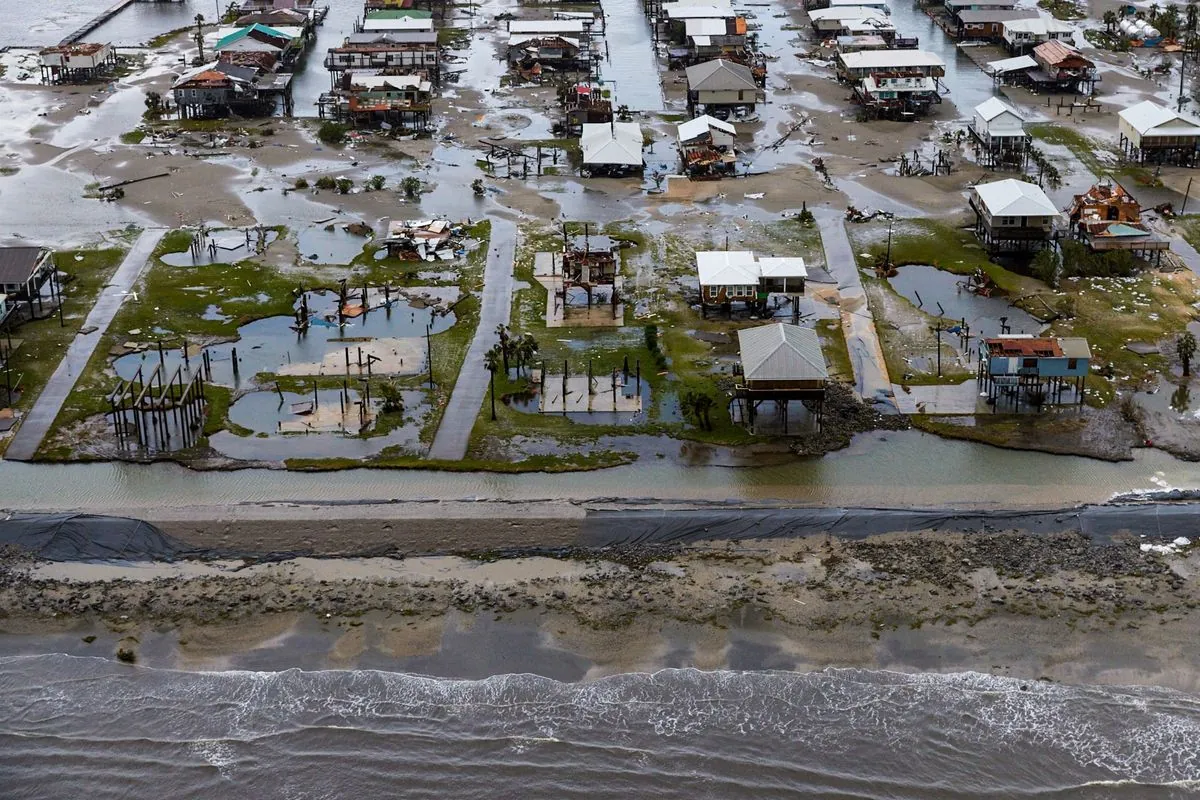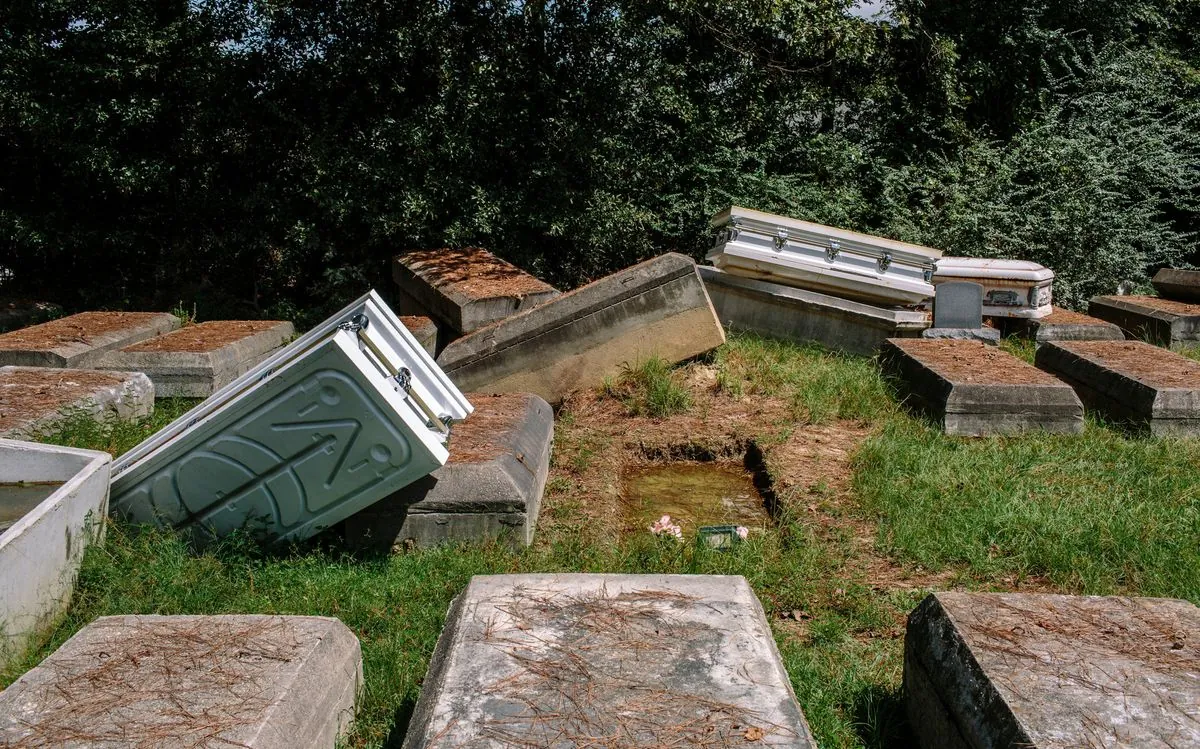Louisiana Grapples with Hurricane Francine's Aftermath
Hurricane Francine hit Louisiana, causing flooding and power outages. Residents are cleaning up, showcasing resilience in the face of recurring natural disasters. The storm affected multiple Southern states.

Two days ago, Hurricane Francine made landfall in Louisiana, leaving a trail of destruction in its wake. The Category 2 storm, with winds reaching 100 mph (155 kph), battered the Gulf Coast, causing widespread flooding and power outages across the region.
In Dulac, a bayou town in Louisiana, Lori-Ann Bergeron visited a local cemetery to check on family graves. While her relatives' tombstones remained intact, neighboring burial sites were disturbed, with caskets surfacing amidst broken crosses and waterlogged floral arrangements. This scene is unfortunately familiar to Bergeron, who recalled a similar incident during Hurricane Rita in 2005, 19 years ago.

The impact of Hurricane Francine extends beyond cemeteries, affecting homes, businesses, and infrastructure across the Gulf Coast. Many residents are still recovering from Hurricane Ida, which struck the area as a Category 4 storm three years ago. Louisiana's coastal communities, which have lost approximately 2,000 square miles of land to erosion since the 1930s, are particularly vulnerable to such natural disasters.
Governor Jeff Landry addressed the situation, emphasizing the resilience of Louisiana's residents. He reported no fatalities or injuries, highlighting the state's improved preparedness and response measures. Louisiana has implemented a Comprehensive Master Plan for a Sustainable Coast since 2007, aiming to enhance the region's resilience against hurricanes and flooding.
The storm's effects were felt across multiple Southern states, with flash flood warnings issued as far as Atlanta, Jackson, Memphis, and Birmingham. In New Orleans, which is partially below sea level, residents woke to power outages and debris-strewn streets. A dramatic rescue unfolded in the city when Miles Crawford, an emergency room nurse, saved a driver trapped in rising floodwaters.
"It's just second nature I guess, being a nurse, you just go in and get it done, right? I just had to get to get him out of there."
Coastal communities bore the brunt of Francine's fury, with storm surges inundating areas already fragile from previous hurricanes. In Cocodrie, residents like Brooks Pellegrin worked tirelessly to clean up their properties, noting that Francine brought more water than Hurricane Ida had three years prior.
Louisiana's unique geography, with its extensive coastline and wetlands, plays a crucial role in both its vulnerability and defense against hurricanes. The state's coastal wetlands account for 40% of all wetlands in the continental United States, serving as a natural buffer against storm surges. However, these vital ecosystems are disappearing at an alarming rate, with Louisiana losing about a football field worth of land every 100 minutes due to coastal erosion.
Despite the recurring threats, many residents remain committed to their communities. Sheriff Craig Webre of Lafourche Parish highlighted the area's improved resilience, citing better drainage systems, pumping stations, and stronger roofing materials. This adaptability is crucial, as Louisiana has experienced 54 hurricane landfalls since 1851, second only to Florida.
As cleanup efforts continue, the focus remains on recovery and preparation for future storms. With the Gulf of Mexico's average water temperature rising by about 2°F since 1970, potentially fueling more intense hurricanes, Louisiana's ongoing coastal restoration efforts and community resilience will be more important than ever.


































